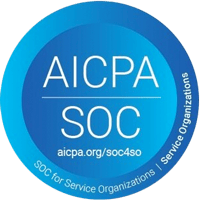What is a Recruitment Strategy?
A recruitment strategy is a clear plan to help recruit for your open roles. Your strategy can give you clarity and confidence while you recruit assisted living positions.
Even if it’s not written down, you already have a specific approach to recruitment. An official recruitment strategy is just a formal documentation of this approach. Standardizing your recruiting will help you hire more efficiently and with better consistency. A recruitment strategy can document your ideal hiring timeline, how you prioritize your open roles, interview questions and strategies, plans for job ad distribution, and more.
It can be overwhelming to tackle a worker shortage, especially for in-demand facilities like assisted living communities. When your recruiters and HR representatives align on a recruitment strategy, you can make sure your whole team is working effectively to hire new employees as quickly as possible.
Recruitment Strategies for Common Assisted Living Positions
Certified Nurse Assistants (CNA )
Your Biggest Challenge: Preventing Turnover
In 2020, the annual rate of CNA turnover was 129%. This is a major pain point for many communities, as CNAs provide 80-90% of direct care to patients in long-term care facilities. Needless to say, CNAs have a huge effect on residents’ daily lives.
Even if you’re able to quickly recruit CNAs, it can be frustrating when you have to refill the same positions from month to month. The challenge here isn’t just recruiting, but recruiting with strategies that support retention.
CNA Recruitment Strategies
- Prioritize salary or competitive benefits in your job ad. CNAs often face low-pay, so this will make you stand out.
- Improve your company culture. A CNA will have no reason to stay at your organization if they don’t feel they’re treated with respect, from both leaders and peers.
- Leverage employee referrals. With such high turnover, this could be the fastest channel for finding your ideal candidate. Referred employees are already vouched for in some capacity, and offering referral incentives can increase morale.
- Make your own candidate pool by creating an in-house CNA training program.
- Create clear career paths. As relatively low-wage employees, CNAs may consider jobs in other industries, especially if they’re promised opportunities to advance. To stay competitive, healthcare employers must help CNAs advance to other roles.
Nurses
Your Biggest Challenge: Recovering from COVID-19
COVID-19 has had a devastating effect on assisted living communities. In fact, the impact is probably even worse than many professionals realize due to a lack of reporting. People over the age of 65 make up over three quarters of COVID deaths in the United States. Many of those deaths took place in assisted living communities.
Assisted living communities have a lower ratio of staff to patients compared to skilled nursing facilities. So when outbreaks do happen, they can easily overload staff. After such a challenging couple of years, nurses will be interested in an assisted living community where they feel supported, even through difficult times.
Nurse Recruitment Strategies
- Address work-life balance from the first candidate touchpoint. Whether a nurse is just entering the industry, or has been here for a long time, they’re likely familiar with the dangers of burnout.
- Make use of social media. Nursing community is strong and vibrant, and that includes online communities. In fact, 94% of nurses in one study said that they use social media. Platforms like Twitter, Facebook, Linkedin, and even TikTok can be helpful in helping you find new candidates.
Non-clinical Roles
Your Biggest Challenge: Attracting Workers From Other Career Paths
Non-clinical roles include any role that doesn’t involve direct patient contact or care. This wide and vital section of the assisted living workforce includes administrators, janitorial staff, cooks, drivers, and more.
These roles are diverse, but when it comes to recruiting, they often share one major challenge. As an employer hiring non-clinical roles, you’re not just competing with other healthcare businesses. You’re often competing against other fields entirely. Some non-clinical workers are deeply cemented in the healthcare industry, but just as many are not. How do you convince top talent to enter healthcare, instead of hundreds of other potential career paths?
Non-clinical Role Recruitment Strategies
- Connect non-clinical roles to your wider mission of quality care. Make it clear that non-clinical workers are an important part of healthcare.
- Connect with local certification programs and colleges. Some people might not even know that healthcare is a suitable career for their skills. Connecting with people who are still choosing career paths can be a great way to introduce top candidates to healthcare.
Occupational Therapists and Physical Therapists
Your Biggest Challenge: High Demand
Even though physical therapists and occupational therapists occupy very different roles in assisted living communities, you will likely face similar challenges when recruiting them. Namely, both positions are in extremely high demand.
The Bureau of Labor Statistics predicts 21% workforce growth for physical therapists by 2030, and 17% workforce growth for occupational therapists. Competition for top candidates, already fierce, will only become fiercer. You have a brief job ad in which to answer the question: why assisted living? And, more importantly, why your assisted living community?
Recruitment Tips
- Connect with physical and occupational therapy schools and programs. With so many open positions, recruitment can begin before a candidate even graduates. Partner with programs early, and introduce students to what makes your community unique.
- Emphasize community in the job ad and recruitment process. Studies show that physical therapists believe that community and work-life balance are the most important factors in their job decision. Long-term stays make assisted living communities unique, which can help workers and residents develop meaningful bonds.
…And More
Assisted living positions are incredibly diverse, and there are many roles we haven’t covered. Recreational therapists, volunteer coordinators, social workers, patient advocates, and more are often involved in assisted living communities. You can adapt many of these strategies to any role in an assisted living environment.
Better Hiring With Apploi
Apploi can help you streamline communication, effectively distribute jobs, and improve your recruitment strategies for all your open assisted living positions. Interested in learning more about how you can recruit, hire, and onboard healthcare staff quickly? Contact us today for a free demo of our software solution.





